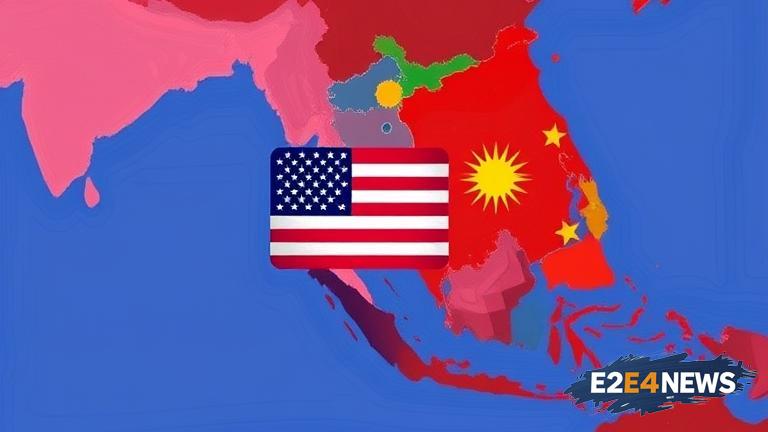The US tariff policy, implemented under the Trump administration, has had far-reaching consequences for countries in the Association of Southeast Asian Nations (ASEAN). Despite initial expectations that some ASEAN countries might benefit from the tariffs imposed on China, the reality is more complex. Vietnam, for instance, has seen an increase in exports to the US, particularly in the textile and footwear sectors. However, this growth has been accompanied by concerns over intellectual property rights and trade secret theft. Indonesia, on the other hand, has experienced a decline in exports to the US, primarily due to the tariffs imposed on steel and aluminum products. Malaysia has also been affected, with its exports of electronics and electrical products to the US decreasing significantly. The Philippines, meanwhile, has seen a mixed impact, with some industries benefiting from the tariffs while others have suffered. Thailand has experienced a decline in exports to the US, particularly in the automotive sector. Singapore, as a major trade hub, has been affected by the tariffs, with its trade volumes with the US decreasing. Cambodia, Laos, and Myanmar have also been impacted, although to a lesser extent. The lack of a clear winner among ASEAN countries is due to various factors, including the diversity of their economies and trade relationships. Each country has its unique strengths and weaknesses, which have influenced the impact of the US tariff policy. Furthermore, the ongoing trade tensions between the US and China have created uncertainty and volatility in the region. The ASEAN countries have been trying to navigate these challenges by diversifying their trade relationships and promoting regional integration. The Regional Comprehensive Economic Partnership (RCEP) agreement, signed in 2020, aims to create a unified market and facilitate trade among ASEAN countries and their partners. However, the implementation of the agreement has been slow, and its impact on the region’s trade relationships remains to be seen. In conclusion, the US tariff policy has not yielded a clear winner among ASEAN countries, with each nation experiencing unique effects on their economy and trade relationships. As the region continues to navigate the complexities of global trade, it is essential for ASEAN countries to promote regional integration, diversify their trade relationships, and address the challenges posed by the US tariff policy. The future of trade in the region will depend on the ability of ASEAN countries to adapt to the changing global trade landscape and to promote a more integrated and cohesive regional economy. With the ongoing COVID-19 pandemic, the region is facing additional challenges, and it is crucial for ASEAN countries to work together to mitigate the impact of the pandemic on their economies. The US tariff policy has also highlighted the need for ASEAN countries to strengthen their trade relationships with other regions, such as the European Union and India. By promoting regional integration and diversifying their trade relationships, ASEAN countries can reduce their dependence on any one market and promote a more sustainable and resilient economy. In the long term, the US tariff policy may lead to a more integrated and cohesive ASEAN economy, as countries in the region work together to address the challenges posed by the tariffs. However, in the short term, the impact of the tariffs will continue to be felt, and ASEAN countries must be proactive in promoting their trade relationships and addressing the challenges posed by the US tariff policy.
